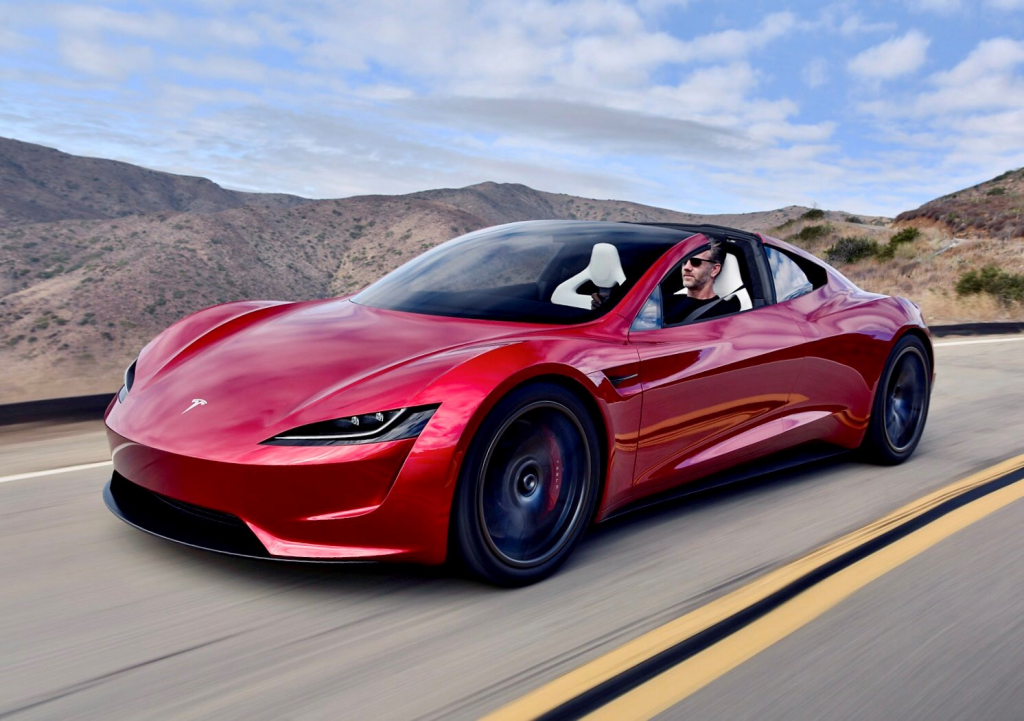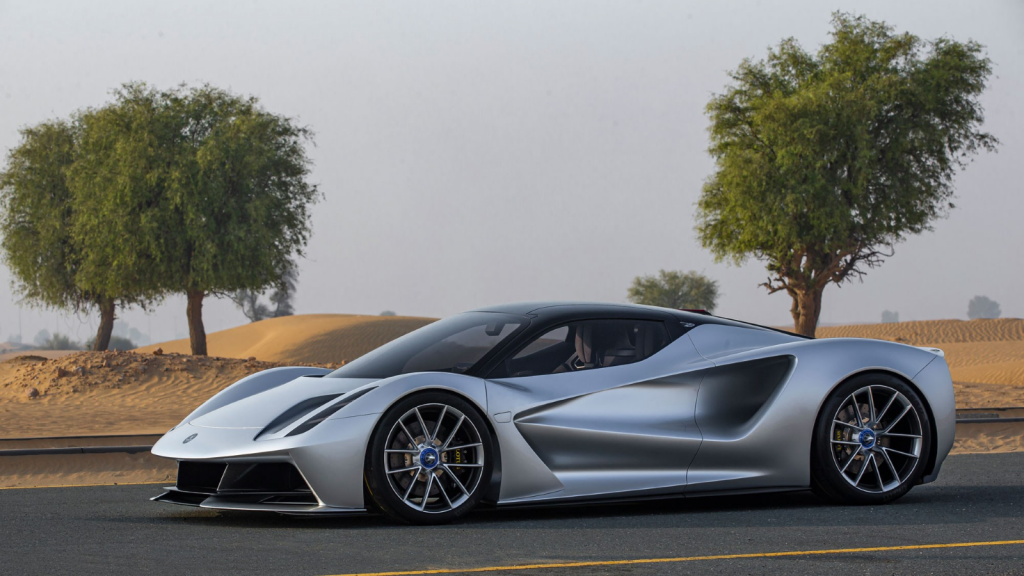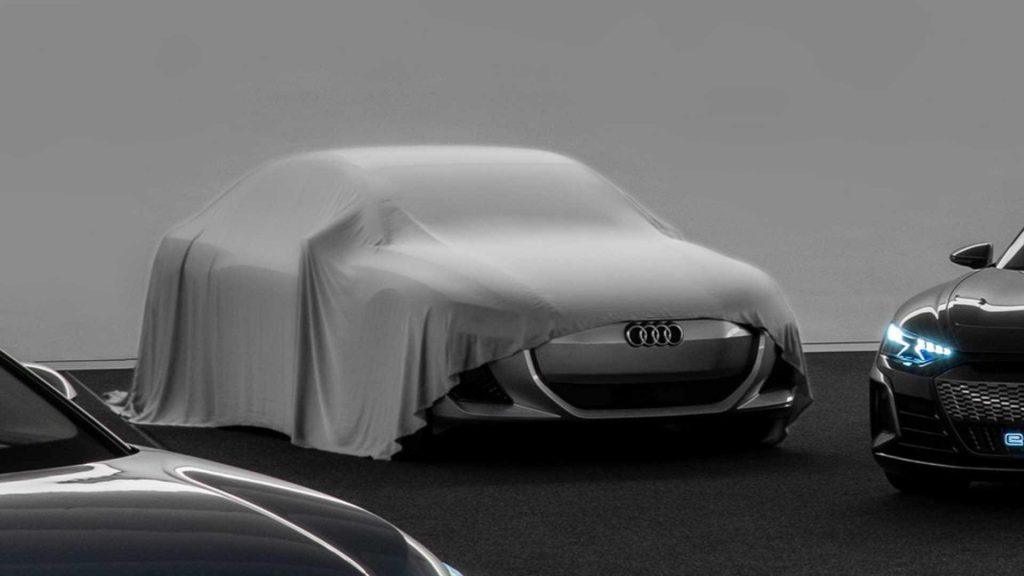With the WRe2 in development here at Warwick Racing, we decided to look ahead to the rest of the year and rank the 10 most exciting electric cars to hit the road in 2021.
10. Volvo XC40 Recharge P8

Volvo’s have always been the ‘sensible person’s’ car. They are practical, reliable, decently priced and boast a second-to-none safety record. Until now, Volvo has purely kept its electric tinkering within their offshoot brand ‘Polestar’, but the XC40 is a bold new step in a whole new range of electric vehicles to don the renowned badge of the parent company.
As you can imagine, much of the technology inside the XC40 is shared with the Polestar 2, but is fitted inside a larger SUV body. Despite the weight gain, the XC40 still boasts 402bhp from twin electric motors and will drive for a very respectable 248 miles on a full charge. The XC40 will go on sale for £53,000, which is £3000 more its Polestar saloon cousin, but for the extra boot space and familiar badge, the XC40 offers itself a no-nonsense family alternative to the more expensive Tesla Model Y
Releasing: February 2021
9. Rivian R1T

Perhaps the most obscure brand featured on this list, Rivian are an American electric car manufacturer founded in 2009, and have heavy-hitting backers in the form of Amazon. A practical 4-door pick-up truck, Rivian looks to jump into the workingman’s EV market before Tesla can put a proper release date on its… divisive ‘Cybertruck’. The R1T has a few of its own flashy styling points- most notably those oval headlights at the front, but the rest of the shape will certainly prove to be more palatable to those who are put off by some of Mr Musk’s more radical aesthetics.
The Rivian’s speed is anything but conventional. The basic model comes with a staggering 754bhp and a sub-3-second 0-60 time, meaning it will give some supercars a decent push from a standing start.
The price for all this power and promising practicality? Around £50,000, and that’s if it ever reaches the UK. With 100,000 models already pledged by Amazon, the R1T is guaranteed to be a success, but will it crack the ‘working market’ like so many electric vans promise? I’d suggest that it’s unlikely.
Releasing: February 2021
8. Lexus UX300e
I have always been an irrational lover of Lexus. Their cars have an understated sense of poise and performance about them other companies can’t match. The UX300e is the Japanese brand’s first electric vehicle and shares a lot of its styling with its petrol-powered counterparts. Unlike many electric vehicles, the UX300e is not bothered about outrageous speed, and is limited to a mere 100mph and a 0-60 time of 7.5 seconds. Compared to the other cars on this list that may seem underwhelming, but this might seem more understandable when you learn that the UX300e hits the market at just £44,000, meaning that it’s still within the threshold of the government’s electric car grant. This price point puts the UX300e in direct competition with brands such as Citroen and Peugeot in the electric market, and when you factor in Lexus’ luxurious reputation and legendary reliability, the UX300e stands as a genuine temptation on an ever-growing list of EV options for consumers.
Releasing: February 2021
7. Ford Mustang Mach-E

For many petrol-heads, there are some cars which should never be tapped with the ever-encroaching magic-wand of electric power. Ford’s unveiling of the Mustang Mach-E had many therefore leaping out their seats and shouting ‘sacrilege’ as soon as they saw what had become of Carroll Shelby’s favourite plaything.
And, yes, let’s address the elephant… or in this case, horse… in the room. The car does not look anything like a typical Mustang, and barely even resembles a muscle car at all thanks to Ford’s self-proclaimed ‘cross-body’ styling. Am I a fan of how it looks? Absolutely not! In fact, I think with its Fu-Manchu moustache grill the Mach-E resembles Hulk Hogan more than it does a typical Mustang, but the hard truth is that the electric mustang is a great car beneath its controversial bodywork.
There are a few differing models of Mach-E coming to Britain this year, with base entries coming in at £42,270 for an impressive 280 miles of range and 332bhp. The top model rises to £56,000 and will boast a staggering 335-mile range. If the Mach-E really interests you, then it’s perhaps best to hold off just a little longer, for a rumoured ‘GT’ performance model.
The Mustang Mach-E reminds us that no badge is too sacred in motoring. Whilst I am all in support for the electric evolution, I will be hoping that Ford’s next pony to gallop out the stables might contain a little bit more of what makes its petrol counterpart so iconic.
6. Volkswagen ID 4

Back in 2015, Volkswagen were at the centre of one of motoring’s biggest scandals, when the German giants were found to be falsifying emission on their vehicles to meet regulations. Since then, few companies worldwide have done more to contribute to the eco-market than VW. Building upon their clever MEB chassis (Modular Electric Drive Matrix), the ID 4 is a smart looking, reasonably priced SUV with plenty of packages and power options to choose from. Starting at £37,800, the ID 4 has been branded as Volkswagen’s first ‘global’ electric car. Given that it wears the badge of the world’s biggest car manufacturer and is likely to sell in droves, the ID 4 marks a very important step in the long-term vision electric vision VW is striving for.
Releasing: April 2021
5. Audi RS E-Tron GT

Whilst the Mustang E-Type might have forgotten what a typical muscle car is supposed to look like, the RS E-Tron GT remembers its heritage by coming out the gates looking like a big, brutish, powerful grand tourer. Lower and sleeker than your typical RS model, the E-Tron GT takes design hints from some of Audi’s more premier supercars like the R8, which is no bad thing. Boasting 637bhp, a top speed of 149 mph and a 3.5 second 0-60 time, the E-Tron RS is no slouch, and it features the ‘rapid-charging’ systems employed in many of the VW group’s more recent electric ventures. The E-Tron helps to compete in a grand-tourer market that is still yet to be truly explored by electric alternatives, and the RS GT adds an appealing mean-streak when placed against the great, but ultimately rather bland Tesla Model S. For me, that alone makes it one of the most exciting electric outings of the year.
Releasing: February 2021
4. BMW iX

Over the last few years, there has been no more intrusive trend in motoring than the rise of the luxury SUV. Once-pure-blooded brands such as Lamborghini, Rolls Royce and even Ferrari have thrown their hats into the SUV market to capitalise on the bizarre cravings of footballers and business officials alike. It’s so refreshing therefore to see BMW, a company with a long history in making SUV’s, taking things a little more seriously. The iX is the technological flag-bearer. Yes, I know, it’s hideous, and that front grill might actually make the Lamborghini Urus look halfway good, but for an electric-spec vehicle the iX isn’t playing around for an easy pay-check. Packing 373 miles of range and 523bhp, this beast will have more power than some new M models. A serious contender in power, range and price to the Tesla Model 3, the iX might set the standard for electric SUV’s for some time, though it remains to be seen if BMW will relent on some of the car’s more controversial styling points.
Releasing: Date Unknown
3. Fiat 500e

The Fiat 500 is one of the most iconic car models in the world. The original 1957 model was so small, cheap and simple that it used to be sold at petrol stations in Italy. When it made its resurgence in 2007, the 500 took Europe by storm all over again, and has remained one of the continent’s best-selling cars despite seeing little change from that 2007 return.
It is truly ground-breaking therefore that in 2021, the plucky little runner will be debuting its first all-electric variant. Although it looks familiar, the 500e is an entirely new car. Unfortunately, at just under £20,000 the Fiat 500e is considerably more expensive than its petrol variant, but is still much more affordable than almost any other electric car on the market. At 199 miles of range, the Fiat 500 crucially beats-out its main rival, the Mini Electric, and is likely to still be a big-hit despite the increased price tag. The Fiat 500e will not win everybody over, and many will no-doubt choose the petrol variant, but Fiat have helped considerably with making electric alternatives affordable and accessible for those who do decide to make the switch. For my money, this is the best electric conversion of an existing-model car coming out this year.
Releasing: March 2021
2. Tesla Roadster

Promised all the way back in 2014. Wait… really? 2014? It’s been THAT long?! Anyway, after 6 years of constant Muskian teasing and set-backs, the much-anticipated Tesla Roadster might actually be hitting the roads in 2021 with a ‘Founders Edition’ for a select group of early buyers. Musk has promised on several occasions that the all-new Roadster will be ‘The Fastest Production Ever Made’. We haven’t seen enough of the California-outfit’s top passion project yet to know if these claims are true, but the on-paper figures certainly make you stop and take note: 250mph, 1.9 seconds 0-6 and a frankly ludicrous (no pun intended) 620 miles of range. If the Roadster lives up to these claims and sticks to its relatively modest (for a hypercar) £151,000, then it will not just be a step for electrical cars, it will be the giant leap Tesla are hoping for to cement their place once-again as kings of the eco market.
So, with all of that considered, why isn’t it at the top of the list? Well, because we simply don’t know enough about whether Tesla can live up to its monumental promises and expectations. I pray for everybody involved, be it business, consumer or simple fan that they can do it, but Elon Musk has made a career out of promising the world, multiple worlds even if you factor in his Mars plans, but there is still a slight lingering pessimistic doubt about me that Tesla might be promising too much all in one car. If suspected rumours are to be believed that the new Roadster is scheduled to be delayed again by another year, then it will only fuel speculation as to why Tesla aren’t getting their Magnum-Opus out there on the roads.
1. Lotus Evija

Whilst Tesla have been hyping the Roadster to be ultimate electric car, another company have been working away quietly in the shadows, hoping to pull off a spectacular upset in the electric hypercar competition. The legendary British manufacturer Lotus unveiled its latest car in 2019 to stunned spectators everywhere, and many laughed off the idea that they had actually produced the world’s most powerful production car ever. After all, this is the company known for making lightweight, nimble, affordable track-day sports cars, not hypercars to rival Bugatti and McLaren and Aston Martin.
Well, they actually did it, the Evija is an all-electric car which produces a simply insane 2,000bhp. That is almost 500 more than a Bugatti Chiron and almost 900 more than an Aston Martin Valkyrie. This hasn’t come without controversy however, because on the surface the Evija defies everything Collin Chapman’s iconic design philosophy dictated: the Evija is quite big, it’s quite heavy and it is an eye-watering 2 million pounds! (Although, it must be said that they have all already been sold, so clearly this didn’t put off everybody). The Evija therefore is such a monumental philosophy: it takes a gigantic new detour from what people typically associate with Lotus, and it’s a massive gamble for a company which many whispered have been on the verge of bankruptcy for a few years. It is remarkable therefore that the Evija even exists, from both a practical and technological standpoint, and even more remarkable that we’ll be seeing it in action this year. The original Tesla Roadster was based upon the old Lotus Elise chassis, so it is therefore slightly poetic that over a year on, it is these two companies again battling to be the ultimate electric poster-boy, now bitter rivals rather than partners. Yes, I will admit that I’m hardly won over by it looks, and I think that in its traditional Lotus yellow it looks rather like a big block of Edam, but I don’t care, I am simply happy to see Lotus back with a bang and perhaps this is the dawn of a new era for the British icons unbound by the restrictions of the past.


